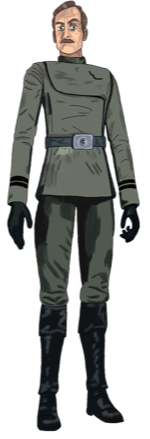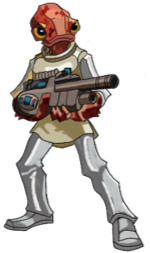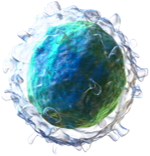immunology wars
may your immune system defend you
B-Lymphocytes

B-lymphocytes originate and mature in the bone marrow, they circulate in the blood, but spend much of their life cycle in the lymphatic system, hence their name B-lymphocytes.
B-lymphocytes start out as naive cells, which have not yet encountered the specific antigen that they are able to respond to. Once a naive cell interacts with the correct antigen, which can be presented to the B-lymphocyte by a macrophage or dendritic cell, it matures into a plasma cell. Some mature B-lymphocytes also become long-lived memory cells, which allow the body to remember previously encountered threats and respond much more quickly the next time that same threat is present, this forms the basis of immunisation/vaccination.
The plasma B-lymphocytes produce proteins called antibodies; these specialised proteins can bind to very specific markers, called epitopes, on antigens, which is any substance that promotes an immune response. These can include pathogens, such as bacteria or viruses, chemicals or toxins and even normally harmless substances, such as pollen, in the case of allergic individuals. Each B-lymphocyte produces a unique antibody, when combined together all the B-lymphocytes in the body produce a collection of antibodies that recognise many different targets. The antibodies bind to their target marking it for destruction, or preventing a pathogen from entering a cell to replicate.


Source: Blausen Medical (CC)
An absence of B-lymphocytes leaves individuals vulnerable to infections; Severe Combined ImmunoDeficiency (SCID) is an inherited disease that results in a complete lack of B-lymphocytes. David Vetter, also known as the Bubble Boy suffered from this condition.
Cells
- Basophils
- Eosinophils
- Mast Cells
- Neutrophils
- Monocytes / Macrophages
- Natural Killer Cells
- Dendritic Cells
- B-Lymphocytes
- T-Lymphocytes
- CD4+ T-Lymphocytes
- CD8+ T-Lymphocytes
- Regulatory T-lymphocytes
- Th17 Lymphocytes
